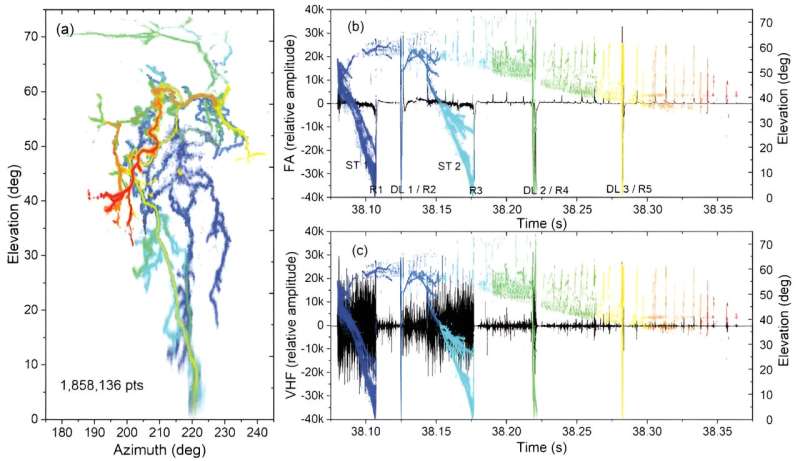This article has been reviewed according to Science X's editorial process and policies. Editors have highlighted the following attributes while ensuring the content's credibility:
fact-checked
trusted source
proofread
New method improves accuracy and resolution of lightning observations

Lightning is one of the most awe-inspiring phenomena in nature, posing direct threats to human society, such as fires, power outages, and communication disruptions, and triggering other atmospheric phenomena and changes in ecological systems.
It involves a series of complicated physical and atmospheric scientific issues. Despite some advances in existing observational techniques, scientists have continued to strive for higher accuracy in analyzing this complex phenomenon.
Recently, researchers from the Northwest Institute of Eco-Environment and Resources (NIEER) of the Chinese Academy of Sciences (CAS), in collaboration with colleagues from the New Mexico Tech in the U.S. and Fudan University in China, have proposed a new method to improve the accuracy and resolution of lightning observations.
The study was published in IEEE Transactions on Geoscience and Remote Sensing on July 27.
The researchers first optimized the very-high-frequency signal from the interferometer, specifically using the double-sided mirror and ensemble empirical mode decomposition method to perform quality control and band-pass truncation on the raw signal (only extracting the relatively high-frequency components needed for location).
By combining the main window with the auxiliary window, they achieved waveform matching of signals from different antennas based on the generalized cross-correlation method. Under a micro-scale window (11ns), accurate pulse pairing and time-of-arrival difference extraction were realized through threshold constraints and similarity constraints on the pulse signal.
Finally, they obtained the two-dimensional spatial coordinates of the matched pulse radiation source using nonlinear least squares.
The method can increase the number of located radiation sources by 10–20 times, and for specific short-duration and rapidly changing discharge processes (such as dart leaders and K events), this number can even increase nearly 100 times. "This allows for the depiction of lightning discharge channels and the analysis of lightning microphysical processes with nanosecond-level time resolution," said Assoc. Prof. Fan Xiangpeng from NIEER, first and corresponding author of the study.
More information: Xiangpeng Fan et al, An Improved Method for Analyzing Broadband VHF Interferometer Lightning Observations, IEEE Transactions on Geoscience and Remote Sensing (2023). DOI: 10.1109/TGRS.2023.3299368
Provided by Chinese Academy of Sciences




















